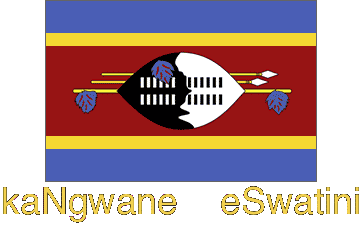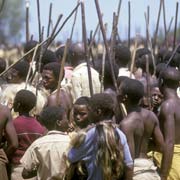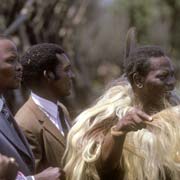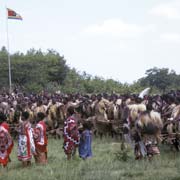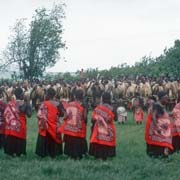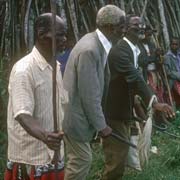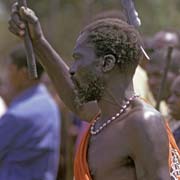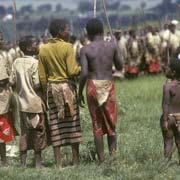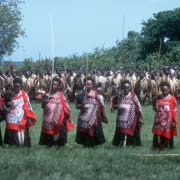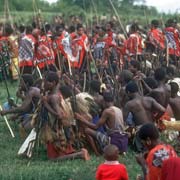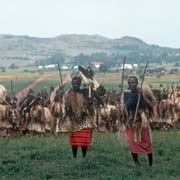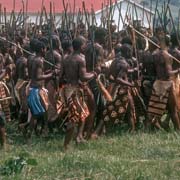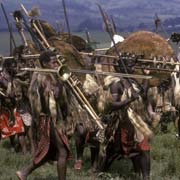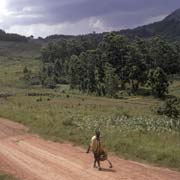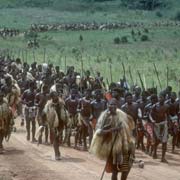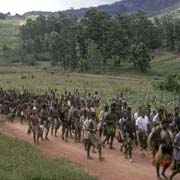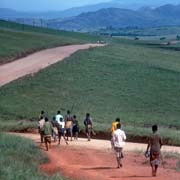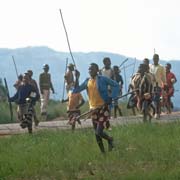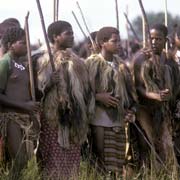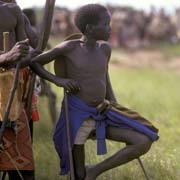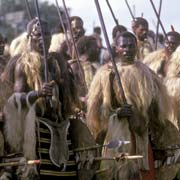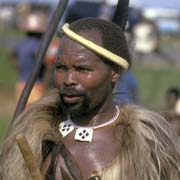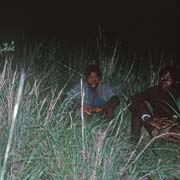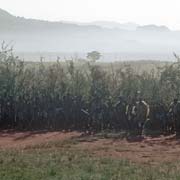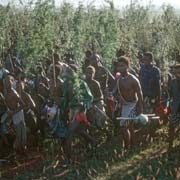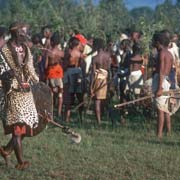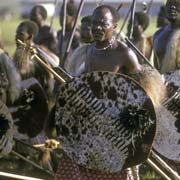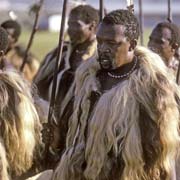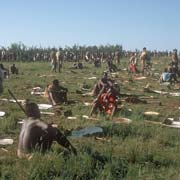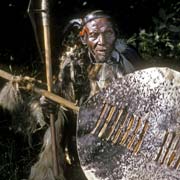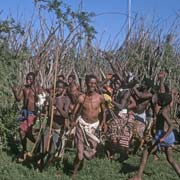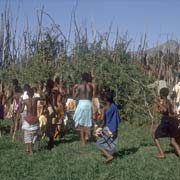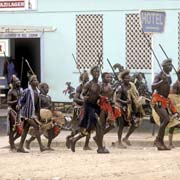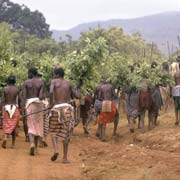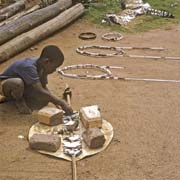Photos of the iNcwala or First Fruits Ceremony in 1974-75, Swaziland
The iNcwala or First Fruits Ceremony in 1974-75
In 1974 the iNcwala or First Fruits Ceremony, the most important ceremony of the Swazi people, started in late December and finished early January with huge downpours of rain.
you may then send it as a postcard if you wish.
After various preliminary rituals in the "iNcwala lencane" (Small iNcwala) had been held, the "iNcwala lenkhulu" (Big iNcwala) started off with groups of young men setting out from the Royal capital of Lobamba to collect "lusekwane", a species of acacia that would be used to cover the "inhlambelo", the sacred enclosure in the "sibaya", the Royal cattle byre. They marched first with the "emabutfo", the warrior regiments to the Royal residence of Lozitha. On this occasion Chief Kaiser Mantanzima of the Transkei, then a semi-independent Bantu "Homeland" in South Africa, was a guest of the King and his family. The King danced with the regiments and then the men set off from Lozitha in a long file, loudly singing the iNcwala song.
Towards dusk they reached the areas where the lusekwane grows and groups of men and boys sat next to the shrubs they wanted to claim. Only in the middle of the night they could pick them and they return to Lobamba, where they arrived again just after sunrise, an impressive sight: it seemed a whole forest was moving. After breakfast the young men and boys then marched with their lusekwane shrubs into the "sibaya", the cattle byre, the focal point of the ceremony. They loudly sang the iNcwala song and threw their lusekwane on a pile; old men then used this to cover the "inhlambelo", the enclosure where the King would undergo certain secret rituals on the main day of the ceremony.
At the start of the iNcwala rituals, groups of men had set out for the different rivers in Swaziland and also for the coast in Mozambique to collect water that would be used in the rituals involving the King on the main day of the ceremony. These men, called "bemanti" (people of the water) could be seen walking back to Lobamba on the day after the bringing of the "lusekwane" shrub. That day young boys collected leaves ("emacembe") of the "mbondvo" shrub around Lobamba, an opportunity for the younger boys, for whom gathering of lusekwane would have been too strenuous, to participate in the ceremony. Those leaves would be used to cover the lower part of the "inhlambelo" sacred enclosure, so that the private ceremonies performed by the King would remain hidden from view.
The following day was the Main Day of the iNcwala in which the King performed rituals in the inhlambelo enclosure and at its climax eat of the First Fruits. That day the heavens opened and it rained with an intensity seldom seen. The ceremony had to go on, regardless; waterlogged shields later had to be dried flat with large rocks on them to prevent warping. A few days later the final day of the ceremony took place. Early in the morning, in the sibaya, the King washed himself with water from the various rivers and the sea, carried in dishes by boys accompanying him. A fire was made and the remains of the bull, uneaten fruits, last year's bedding and clothing used by the King ritually burnt; it certainly was extinguished by rain, a good sign: the nation was renewed, the new crops could be eaten and kinship with the King was reaffirmed.
See also: the iNcwala ceremonies in 1970.


